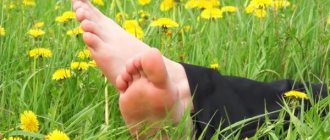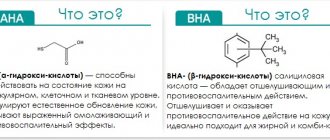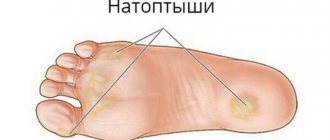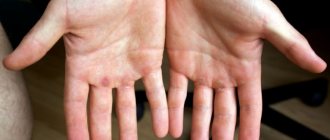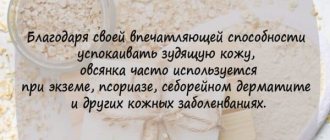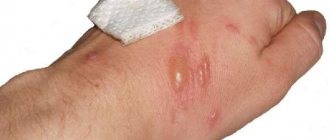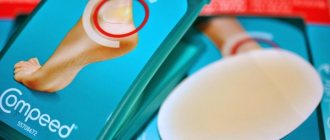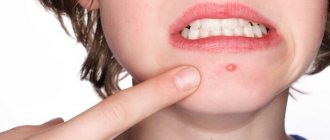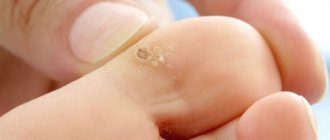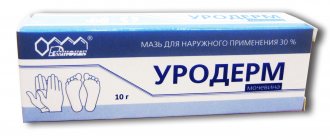Causes of appearance and control measures
Corns are hard formations on the skin that appear as a result of the accumulation and death of cells on the injured surface of the feet. Provoking factors for the appearance of formations: excess weight, circulatory disorders, uncomfortable shoes, excessive sweating of the feet. The keratinization of the epidermis causes pain and discomfort when moving.
Types of formations:
- rod
- light yellow formations with a dark dense rod in the center, capable of penetrating into the deep layers of tissue. - plantar
- wide flat growths that do not cause pain upon palpation. - digital
- formed between the fingers on the inside.
The simplest and most effective way to get rid of the problem is to use special ointments and creams. The action of the drugs leads to the softening of keratinized formations, making them easy to remove mechanically.
If corns appear, the ointment will help get rid of them
Ointment for corns allows you to gradually get rid of corns, because its use helps:
- soften, loosen keratinized areas, partially dissolve rough tissue;
- eliminate dryness and soften the skin;
- facilitate mechanical removal;
- get rid of pain and discomfort when moving;
- prevent the formation of new elements.
Corns are areas of accumulation of dead cells that arise at the site of constant injury to the skin of the feet. They are provoked by the friction of tight shoes, increased weight, sweating and circulatory disorders (often occur in diabetics, with atherosclerosis).
Therefore, ointments provide a temporary effect if the provoking factor is not eliminated. This is a disadvantage of all external preparations (plaster, cream, balm). Also, you should not count on immediate results with old formations; long-term use is often necessary.
The benefits of the ointment include:
- dense consistency;
- stay on the skin surface for a long time;
- poorly absorbed, do not penetrate into the blood;
- have a long-term effect on the keratinization zone;
- most are affordable (packaging costs up to 100-200 rubles);
- widely represented in the pharmacy chain, no prescription required;
- easy to use;
- a small number of contraindications.
Composition of ointments, benefits of treatment
Ointments are an inexpensive method for removing dead skin. They are affordable and can be purchased at any pharmacy without a prescription. Medicines are convenient to use at home.
Ointments are classified as drugs for external use. The active substance acts directly on the lesion without entering the bloodstream. They have a small number of contraindications, the main of which is individual intolerance to the drug or its individual components.
Ointments for corns - oily consistency, for long-term effect on keratinized areas. They have a keratolytic effect: they soften, dissolve, and remove rough areas of the skin. Under the influence of the drug, keratinized growths become soft, loose, and easily removed.
The composition of ointments for corns includes the following substances:
- urea - moisturizes, softens the epidermis, prevents cracking of the skin;
- acids (salicylic, lactic, benzoic) - have a keratolytic and bactericidal effect;
- lanolin, petroleum jelly, glycerin - soften and moisturize the skin;
- enzymes - trypsin, pepsin;
- herbal extracts;
- essential oils.
[media=
https://youtu.be/ZeygsOBEl80
]
The composition of combined ointments includes auxiliary components with a regenerating antimicrobial, restorative effect. Plant ingredients have healing properties. Essential oils are used as an antiseptic.
Procedure for applying ointments
To increase the effectiveness of the drug, feet with corns should be prepared. Wash limbs for 10-15 minutes. steam in a hot soda solution (1 tablespoon of baking soda per 2 liters of water). After the procedure, the feet are thoroughly dried with a dry towel.
The ointment is carefully applied to the damaged area, trying not to get on healthy epidermal tissue. In some cases, the ointment is applied to a gauze pad and a compress is made using plastic film. Keep the ointment on the affected areas for 2 to 10 hours, according to the instructions. During this period, keratolysis occurs - the separation of dead cells, their separation from healthy tissue.
Softened exfoliated formations are removed using a brush, pumice stone or special devices included with the medicine. Dead skin areas are removed carefully, taking care not to damage healthy areas of the sole. Treated feet are lubricated with a cream with a moisturizing, regenerating and antibacterial effect.
How to treat corns on the feet, heels, and toes with ointment
To treat corns on the feet, fingers and heels, you must first make a warm foot bath with soda and soap (a tablespoon of soda and 20 ml of soap per 2 liters of water). After this, the skin is completely dried and the ointment is applied strictly to the callus area, a piece of parchment is placed on top, and healthy skin is protected with a cotton swab. For example, you can cut a hole in a cotton pad to the size of the callus, and apply ointment to the callus.
After this, the drug and the cotton layer are fixed with a gauze bandage overnight. In the morning, you need to wash off the drug and treat the callus with a pumice stone or nail file. The course of procedures lasts from 1 to 3 weeks. To speed up the process, treatment must be carried out at least 2 times a day.
If the rough skin occupies a fairly large area (for example, along the edge of the heel), then the ointment is applied to a napkin, but so that it does not get on the sensitive area of the skin. Parchment is placed on top and secured with plastic wrap. Dead skin areas are carefully removed with a scraper or foot grater, the feet are washed and generously lubricated with moisturizer.
In order to ease friction and pressure on the callus, you need to use special protective pads or you can make them yourself. To do this, cut out a circle with a hole the size of the corn from thick and soft fabric (for example, felt). A felt or plastic pad is placed between the fingers.
Watch the video on how you can get rid of corns at home:
If the ointment is insufficiently effective, the corns are removed with a laser, liquid nitrogen, cauterized with electric current, radio waves, or surgically removed.
Precautionary measures
Medicines should be applied directly to the affected areas of the feet, without affecting nearby tissues. To protect against the effects of the drug, healthy skin located near the keratinized formations is lubricated with a rich cream. Careless use of the medicine can lead to the development of dermatoses, ulcers, and areas of hypopigmentation. The ointment should not be applied to moles, age spots, open wounds, or cracks.
Remedies for corns are quite aggressive, and you need to be careful when using them.
To protect the healthy epidermis from the effects of the ointment, take a piece of adhesive plaster, cut a hole in it equal in size to the size of the corn, and stick it on the foot. For large plantar formations, use several pieces of adhesive tape to cover the affected area. The ointment is applied with a cotton swab or toothpick. Hands should be protected with waterproof gloves made of rubber or latex.
TOP 5 best ointments
The best products, according to patient reviews, that allow you to quickly remove corns on the feet. Medicines are affordable and effective when used. The drugs rarely cause allergies.
| Name | Main active ingredient | Advantages | Price |
| Salicylic ointment | salicylic acid | cheap, effective for old, dry corns | 30-50 rub. |
| Bensalitin | salicylic acid | fast action | 20 rub. |
| Cream Super Antimozolin | urea, lactic acid | removes old rod formations | 150 rub. |
| Nemozol | salicylic acid. urea, plant extracts | combined preparation, provides comprehensive care for the skin of the feet | 180 rub. |
| Aquapiling cream paste | urea | effect after first use | 190 rub. |
Salicylic acid is the most active component for softening and exfoliating dead tissue. For old, core corns, you need to select products with an acid content of 10% concentration. Products with urea and other organic acids remove dead cells more carefully, but act more slowly.
The best creams for calluses and corns
For dry calluses, medications in the form of a cream are used. Such compositions are well absorbed, do not leave a greasy sheen and do not stain clothes. The best creams for corns are made on the basis of lactic, benzoic, salicylic acids and emollient natural oils. Their use minimizes complications and allows you to quickly get rid of rough growths on the arms and legs.
SVR Foot Cream Xerial 50 Extreme Creme Pieds
5
★★★★★
editorial assessment
97%
buyers recommend this product
Xerial's formula contains urea, salicylic acid, shea butter and glycerin. The cream has a light texture, so it is evenly distributed and instantly absorbed, leaving the skin smooth and soft.
Active substances exfoliate dead cells, soften rough areas and increase the elasticity of the epidermis. The drug is suitable for eliminating calluses on the feet, palms and elbows. Sold in a 50 ml tube.
Advantages:
- stimulates renewal of the stratum corneum;
- retains moisture in cells;
- suitable for sensitive skin;
- has no smell.
Flaws:
- The tube runs out quickly.
The cream solves many problems of dry skin and is considered a good remedy for the prevention and treatment of corns.
SuperAntimozol
4.9
★★★★★
editorial assessment
96%
buyers recommend this product
The cream contains urea, salicylic, lactic acids and herbal additives that have a bactericidal and softening effect. The cream is designed to eliminate corns and, with regular use, completely eliminates unpleasant formations. Sold in a 75 g tube along with instructions.
Advantages:
- homogeneous composition;
- deep hydration;
- healing of cracks;
- softening callous growths;
- elimination of unpleasant odor.
Flaws:
- does not help with calluses with a core.
SuperAntimozol acts delicately and rarely provokes side effects, therefore it is considered a safe and effective treatment.
Intensive cream Footprim
4.9
★★★★★
editorial assessment
95%
buyers recommend this product
Bulgarian cream Footprim includes natural green tea extract and salicylic acid. Active substances prevent the destruction of collagen, block the appearance of dead cells and stimulate blood circulation. The product destroys bacteria, moisturizes and provides complete care for the skin of the feet. Sold in plastic packaging of 50 ml.
Advantages:
- disinfects;
- softens rough areas;
- increases skin elasticity;
- exfoliates dead cells.
Flaws:
- The minimum course of treatment is 2-4 weeks.
Footprim is a multi-action cream that prevents flaking of the feet and copes with old corns.
EVO with urea
4.8
★★★★★
editorial assessment
92%
buyers recommend this product
The main component of the cream is urea, which prevents dry skin, the appearance of calluses and cracks between the fingers. Additional substances include: extracts of celandine, pine needles, oak bark, olive and coconut oil. The drug stimulates metabolic processes, makes the skin elastic, soft and prevents the development of fungal infections. Comes in a 50 ml tube.
Advantages:
- softens and nourishes the skin;
- eliminates unpleasant odor;
- heals wounds;
- It is used sparingly.
Flaws:
- Individual intolerance to the composition is possible.
EVO cream is recommended for softening rough, cracked feet and eliminating dry calluses.
Nezosol
4.8
★★★★★
editorial assessment
88%
buyers recommend this product
The effectiveness of Nemozol cream is ensured by glycolic acid, sulfur, salicylic acid, glycerin, and castor oil. The composition has a fungicidal, antiseptic, keratolytic effect, therefore it quickly softens calluses, heals abrasions and wounds. Sold in a 5 g plastic jar.
Advantages:
- softens dry calluses;
- renews the skin of the feet and heels;
- protects against fungus;
- inexpensive.
Flaws:
- aggressive composition can cause irritation;
- very small volume.
You need to use this cream carefully. Steam the callus and dry your foot. Make a hole in the patch the size of the corn and fix the callus in the slot. Using a toothpick, apply Nemozol in an even layer and cover with another bandage on top. After 1-2 days, all that remains is to remove the bandage and clean the exfoliated areas with pumice.
Mozolka “Green Street”
4.7
★★★★★
editorial assessment
85%
buyers recommend this product
Mozolka cream-balm is a storehouse of valuable ingredients that have a beneficial effect on skin health. Contains emollient natural oils, amaranth and papaya extracts, salicylic acid and Bacillus enzyme. The composition improves blood circulation, reduces pain, restores the structure of the skin, and makes the legs well-groomed and beautiful. Volume 15 ml.
Advantages:
- many natural ingredients;
- removes discomfort when walking;
- eliminates excessive dryness;
- heals small cracks.
Flaws:
- small tube.
The cream is used 2-3 times a day, gently rubbing into the skin of the feet. There is no need to additionally steam your feet before treatment - you can apply it as is.
READ ALSO
11 Best Creams for Cracked Heels
Products with salicylic acid
Salicylic ointment is a non-steroidal anti-inflammatory drug containing 10% salicylic acid. It has a pronounced keratolytic effect, exfoliating, regenerative effect. The product is applied to pre-steamed feet, strictly to the affected area. A sterile bandage with medicine is fixed and kept for 8-10 hours. Wash off with warm water and carefully remove softened, keratinized areas of skin. Several procedures are carried out until the problem disappears completely.
Anti-callus paste 5D (5 days) - contains salicylic acid, lanolin, petroleum jelly. The product loosens and exfoliates dead growths, which can be easily removed. A sterile napkin with medicine is applied to the corns and fixed with a plaster. Leave for 10-12 hours. The procedure is repeated 1-2 times a day until the formation is completely softened.
The ointment is used for therapeutic and prophylactic purposes.
Products containing salicylic acid should not be used for kidney disease.
Bensalitin - contains salicylic and benzoic acid, which have antiseptic properties. The ointment is applied to a tampon, applied to the corn and secured with an adhesive plaster. The dressing is changed every 2 hours. Softened keratinized areas are removed mechanically. The product should not be used for damaged skin.
Prevention
Although using the above folk methods, corns are guaranteed to be eliminated within a week, their appearance in the future is not excluded. To avoid this, it is important to follow a number of simple preventive measures:
- in case of hormonal disorders or vitamin deficiency, it is important to ensure the body receives useful substances - dietary supplements, vitamins, healthy nutrition;
- foot hygiene - daily washing of feet, treating areas where corns and calluses formed in the past with pumice;
- cosmetic creams with a moisturizing effect;
- eliminate excessive sweating - both with the help of special means, and simply by frequently changing socks regularly.
Finally, remember the importance of choosing shoes that are comfortable for your feet. In the case of a beautiful floor, you should think about completely abandoning hairpins. For flat feet and other types of foot deformities, special orthopedic insoles, silicone pads or heel protectors are suitable.
Preparations with urea
Super Antimozolin cream - contains urea and lactic acid. Organic acid penetrates deeply into the dermis and can soften the core processes. With the help of the product you can effectively treat corns on the feet. The cream is applied to clean skin of problem areas of the feet in a thin layer and fixed. Insulate the foot with socks, leave it overnight, and treat it with pumice in the morning. The average cost is 150 rubles.
Lekker-Stopmosol ointment contains urea and lactic acid. The product softens keratinized formations, relieves inflammation, and restores the integrity of the skin.
The medicine is applied to the affected area 3 times a day, massaged until completely absorbed. Exfoliated areas of skin are scraped off with pumice and treated with a restorative cream. Price 120 rub.
Aquapeeling cream paste - contains urea (40%), glycerin. The paste is applied to the steamed problem area with a layer of 3-4 mm, covered with a cotton pad, and fixed with a band-aid. You can leave the product on overnight, wearing cotton socks. The softened skin is carefully removed, the foot is washed with warm water, washing off the remaining cream. The procedure is repeated until the corns completely disappear. The cost of the drug is 210 rubles.
The best adhesive plasters for calluses
Calluses cause severe discomfort when walking and make physical activity difficult. The patch soothes pain, minimizes shoe contact with abraded skin and prevents bacteria from entering the wound. There are patches on sale for dry and wet calluses, which differ from each other in the set of active ingredients.
Compeed patch for wet calluses on feet MixPack
5
★★★★★
editorial assessment
97%
buyers recommend this product
Compeed is designed specifically for wet calluses. The patch is based on innovative hydrocolloid particles that absorb discharge from the wound and prevent it from drying out. The product protects the blister from infection, promotes rapid healing and prevents scar formation. The package contains 5 patches with an atraumatic pad.
Advantages:
- maintains optimal humidity levels;
- protects the blister from friction;
- relieves pain;
- does not peel off when wet.
Flaws:
- the price is high.
The use of the Compeed patch guarantees rapid healing of blisters and prevents complications.
Salipod
4.8
★★★★★
editorial assessment
93%
buyers recommend this product
The main active components of the patch are salicylic acid and sulfur. These substances provide keratolytic and antimicrobial effects, soften corns and dry calluses. The ingredients penetrate into rough tissues as deeply as possible and quickly get rid of old formations.
Advantages:
- softens keratinization;
- inhibits fungal flora;
- increases blood circulation;
- reduces discomfort when walking.
Flaws:
- there is a risk of burns.
Salipod is glued to the problem area and left for 1-2 days. Then they remove it, steam the foot and carefully clean off the softened callus.
Combined products
Liquid cream Mozolin - contains salicylic and benzoic acids, lemon and sage extract. It has a keratolytic, antiseptic, softening effect. The product is applied to the steamed heels in a thin layer, covered with a sterile napkin, and fixed. Put socks on top and leave overnight. Corns dissolve in a few sessions. Average price 280 rub. An analogue is Doctor Mozol cream with additional sulfur content.
Sophia cream (medicinal leech extract with urea) is a combined preparation containing salicylic acid, urea, and petroleum jelly. Natural substances propolis, tea tree oil and plant extracts: celandine, St. John's wort, oak bark and aloe. The product softens, moisturizes and heals the skin. Has high penetrating ability. Effectively removes dead cells, restores skin elasticity and firmness.
Combined drugs have a comprehensive effect on the skin: soften growths, relieve inflammation, and restore tissue.
Cream Doctor contains urea, soybean oil, glycerin, vitamin E, and essential oils. The therapeutic and cosmetic product acts gently: moisturizes the skin on the legs, softens and exfoliates rough areas. The course of treatment is 2-5 days. The cream has an unpleasant specific smell. Average price 190 rub.
Ointments with herbal ingredients
Balsamic liniment according to Vishnevsky - contains birch tar, castor oil, xeroform. It has a pungent odor. Has a softening, wound-healing effect. Capable of completely removing corns at home, including old and core ones. The medication is applied to the affected area with a gauze bandage and polyethylene 2 times a day, leaving overnight. The course of treatment is 1-2 weeks depending on the depth and size of the formation.
Propoceum is a liniment with propolis. Used as an adjunct after removing corns. The restoration and healing of damaged tissues is accelerated. The skin of the legs becomes elastic. Cost 150 rub.
Products with herbal extracts are suitable for the treatment of formations in pregnant women, children, and the elderly.
Nemozol cream - contains salicylic and lactic acids, urea, sorbitol, propolis, sea buckthorn and tea oil. The composition includes plant extracts: celandine, oak bark, garlic. A positive effect is observed after three applications. The cream is applied to a clean affected area and rubbed until completely absorbed. Cost approximately 180 rubles.
What remedy to buy for calluses
Calluses are painful growths on the skin that appear as a result of excessive pressure or friction. They form in the heels, between the toes, on the outside of the feet and can be dry or wet.
The callus, at first glance, seems harmless, but this impression is deceptive. In the absence of proper treatment, the defect can lead to serious complications, including rupture of the bladder, wound infection, ingrowth of the rod, and persistent pain when walking.
Therapy requires medications aimed at healing, relieving inflammation, and softening hardened formations. Treatment is selected depending on the type of callus.
- To get rid of a fresh blister, the affected area is washed, filled with antiseptic and a hydrocolloid patch is applied.
- If the blister bursts, apply antimicrobial ointment to the wound, cover it with gauze and fix it with a band-aid. The dressing is changed daily until the injury heals.
- To remove dry calluses, rough skin is steamed, treated according to the instructions with anti-callus cream, gel, or a salicylic acid-based patch is applied. In case of severe coarsening, the procedure is repeated several times.
It is difficult to remove rod growths on your own. In most cases, this requires surgery.
If, despite wearing comfortable shoes and maintaining good hygiene, calluses appear frequently, consult a podiatrist. This symptom may indicate the development of flat feet or improper functioning of the sweat glands.
Imported drugs
Balsamed ointment from the German company Esparma is a drug for removing corns and softening the skin. Contains urea, lactic and linoleic acids, panthenol. Avocado and jojoba oils actively soften and moisturize the skin. The product has an exfoliating, regenerating, healing effect. Used for medicinal and prophylactic purposes. Average price 350 rub.
Mild preparations are suitable for daily care of the skin of the feet.
Hemosol ointment (Poland) - contains salicylic acid, rapeseed oil, rosin, and sweet clover herb. Softens rough layers of skin, relieves inflammation, and has an antimicrobial effect. The drug, heated to 36-37°C, is applied to the steamed areas of the feet and sealed with a band-aid. The procedure is carried out 2 times a day. Not recommended for treating children under 12 years of age. Cost: 150 rub.
Scholl Active Repair Cream (UK) - contains urea, lanolin, keratin. Quickly and effectively softens hard formations. The kit includes special files for removing softened areas of skin. The product is applied to cleansed problem areas 2 times a day. Average price 300-350 rubles.
Do-it-yourself ointments
Some patients prefer to be treated with natural remedies made at home. Ointments prepared independently are inferior in effectiveness to those purchased at the pharmacy. Traditional medicine rarely causes allergic reactions.
Recipes for folk remedies:
- Take 1 tbsp. l. vegetable oil, 1 raw egg, 1 tbsp. 70% vinegar essence. The ingredients are thoroughly mixed until a homogeneous mass is formed. To thicken, place in the refrigerator for 24 hours. A napkin with ointment is applied to the corn, tied with polyethylene, and warm socks are worn. The product is used at night for 5 days. After treatment, the exfoliated dead areas of skin are removed.
- 3-5 cloves of garlic are boiled for 2-3 minutes, crushed in a garlic press, mixed with butter. A mixture with the consistency of sour cream is applied to the affected lesions for 3-4 hours, and the top is covered with film. The treatment is repeated until the corns soften.
- Ground prunes with a small amount of milk are brought to a boil, cooled slightly, and a paste-like mass is prepared. Warm ointment is applied to the keratinized areas for 20 minutes. The procedure is repeated 3 times using a warm mixture. Softened growths are removed.
Homemade ointments contain only natural ingredients. They can be used for the elderly, pregnant women, and weakened patients. The products do not contain synthetic components that cause hypersensitivity.
What not to do with corns
It is known that the first recommendation when treating wet calluses is to pierce the swelling with a pin, and only then proceed to treatment of the inflamed area.
In the case of corns, their physical removal is not only undesirable - it can lead to dangerous complications, for example, bone deformations, hemorrhage or infection.
The reason for this is the structure of the tumor. Most corns have a hard, hard core at the base. If it is damaged, there is a high risk of infection. Therefore, tools such as special sanding brushes or pieces of pumice should be put aside.
Bath treatment
The simplest, most effective and, at the same time, pleasant method is soaking the sore foot in hot baths. For this purpose, special medicinal compositions are prepared. We analyze the most effective ones in detail.
Soap and soda bath
The method of disinfection, known since Soviet times, in our case will act as a medicine. Only simple laundry soap or its cosmetic equivalent with a fat content of less than 70% is suitable as an ingredient. You need to use regular baking soda.
- 5 l. water;
- 100 g soap;
- 100-150 g of soda.
After waiting for the ingredients to dissolve, immerse your feet in water for half an hour. The effect is not quick, but true. In a week the result will not be long in coming.
Sodium solution
In this case, you will need only one ingredient - sodium permanganate, also known as potassium permanganate. To 5 liters of hot water you need to add 3-5 tablespoons of the substance so that the liquid acquires a light pink tint. Repeat the procedure for a week, half an hour a day.
This video will tell you how to remove corns at home:
Saline solution
Both food and cosmetic sea salt is suitable. For 5 liters of water you need to spend at least half a glass of salt. The procedure should not be too long - 15 minutes is enough, otherwise the skin will dry out.
After treatment, it is a good idea to moisturize the corns with cream.
Baths do more than just cure inflammation. They also have a soothing effect on the tissue, and hot water softens the corns and promotes better absorption of beneficial ingredients by the skin.
Compresses
Applying compresses is a less convenient treatment option. For the procedure to work, you need to leave the compress on for several hours, or even overnight. It is best to combine this method with soaking the foot in medicinal baths.
Onion
To prepare the mixture we need a fresh onion. A paste is prepared from it, the consistency of which is similar to ointment. You can use a spoonful of honey as an additional ingredient - it will make the mixture less odorous and more pliable.
The callus is smeared with the mixture, wrapped in a thick cloth and left in this form overnight. There is another recipe for using onions.
According to him, coarsely chopped pieces are soaked for 12 hours in table vinegar. During the procedure, the onion will be boiled, and the product will acquire rare antifungal properties. Also apply the compress at night.
Lard and garlic
This is the oldest folk remedy that has proven its effectiveness over years of practice. In the past, lard was used to treat burns, and it is also useful against hardening of the skin. Garlic, a popular ingredient in Chinese medicine, enhances the healing properties of the mixture.
We adhere to the following compress recipe:
- Lard and garlic are ground in a meat grinder.
- Mix the ingredients in equal proportions.
- Apply the mixture to the corns and cover the top with a cloth.
- Leave the compress overnight.
The procedure must be repeated until the tumor on the foot completely disappears. Relief occurs within 2-3 days after the first procedure, complete reduction of the corns occurs within a week.
Aloe
Aloe juice is famous for its astringent, stretching effect. Its use is absolutely painless and 100% effective. Aloe, like no other folk remedy, copes with hard corns, stretching their stem without causing any harm to the healthy area of the skin.
To treat calluses and corns, you need to take a freshly cut leaf of the plant. It is cut lengthwise, the fleshy side is applied to the problem area, and bandaged tightly.
It is advisable to wear it around the clock.
This compress works very quickly - after 2-3 days of continuous use, the central, hard part of the callus is stretched out, and the healing process begins. The juice of the leaves of the Crassula plant has a similar effect.
How to get rid of corns with essential oils
Oils do not lose their beneficial effect even as an additive to medicinal baths. However, they can also be used directly, treating the swelling directly. To eliminate skin problems, it is preferable to use the following plant oils:
- calamus;
- oregano;
- sage;
- lavender;
- tea tree.
After softening the skin in hot water, the corns are treated with oil. There is no need to make a compress - just cover the swelling with a band-aid. It is important to ensure that the procedure does not involve healthy areas of the skin.
It is advisable to repeat the procedure at least once every 6 hours. The main purpose of treatment with essential oils is to soften the skin followed by treatment with ointments or creams. The oils themselves are prized for their calming effects.
Hydrogen peroxide treatment
Hydrogen peroxide is a universal remedy. It has a disinfecting effect, eliminates sweating of the skin, and stops bleeding. It is also suitable for combating corns; in this case, it is used as part of various mixtures:
- a couple of drops are added to the cosmetic tonic, treat the corns for 5 minutes twice a day;
- mix 1 part of peroxide with a concentration of 30% with 5 parts of water, soak a cotton swab in the composition and apply it to the swollen area for no more than 2 hours;
- dilute peroxide in water in a ratio of 50 g per 1 liter; Soak the foot in the resulting bath for 15 minutes.
It is important to remember that hydrogen peroxide can cause burns and irritate healthy skin. Using the product more often than 2-3 times a week is strictly prohibited, as is using a pure concentrated solution.
Aspirin
Few people know that aspirin is suitable not only for oral administration. Due to its saturation with acetylsalicylic acids, it reduces sweating, suppresses the work of the sebaceous glands, and also softens rough skin.
For a noticeable effect, a very high concentration of aspirin will be required - 10 tablets are dissolved in a glass of water, ethyl alcohol or vodka. The mixture is infused for a day, a cotton pad applied to the corn is generously soaked with it.
Fix the top with a compress or a thick sock and leave it like that overnight. Complete removal of dry skin is possible within 5 days of daily procedures.
Ointments
Homemade ointments are used much less frequently than other products. The reason is the complexity of production and the need to infuse the composition.
In addition, the ingredients of some recipes quickly deteriorate, and every day you need to prepare a new portion of the drug.
Egg-vinegar
The simplest ointment option. It takes no longer than half an hour to prepare and infuses for 24 hours. Ingredients:
- 1 chicken egg;
- 30 g table vinegar (70%);
- 30 g vegetable or essential oil.
Vinegar and oil are added to the raw egg and the mixture is beaten until thick. Apply to the affected area of skin before bedtime. Repeat treatment until the corns are completely eliminated.
Dandelion
The remedy can only be prepared in the spring, since it requires unblown dandelion inflorescences. 100 g of inflorescences (20 pieces) are crushed to a homogeneous paste.
An equal volume of vegetable oil is mixed into it and the mixture is boiled for 10-15 minutes. After preparation, the ointment must be strained through a piece of thick cloth.
Like most other remedies, the rough area of skin is treated overnight, a cotton pad soaked in ointment is fixed with a compress. The advantages of the dandelion composition are that it can be stored in the refrigerator for several months.
Dairy
Milk is needed to give the ointment the appropriate consistency. Potatoes, lard, and onions can be used as the main ingredients. Let's look at the recipe using milk and onion ointment as an example.
A small amount of onion (50 g is enough) is chopped, an equal volume of milk is added (2 tablespoons). There is no need to warm up the ointment after mixing. The composition is stored for only a few days, applied overnight. To increase the effect, it is advisable to first soften the skin using one of the above methods.
Glycerin
In cosmetology, glycerin is valued for its moisturizing properties. A composition resembling an ointment in viscosity can be obtained by mixing 2 parts glycerin with 1 part medical alcohol or vinegar.
Folk remedies for corns are presented in this video:
The softening effect of the composition is minimal; the corns also require pre-treatment with a compress or steaming in a bath.
Get rid of corns forever
Domestic and foreign pharmacology offers a wide range of ointments for getting rid of keratinized formations, varying in composition and effect. The choice of the optimal remedy for the treatment of keratinized areas of the feet depends on the size and depth of the corns. The price of medicines is in the range of 50-350 rubles.
Creams have a milder effect compared to ointments. They can be used for both therapeutic and preventive purposes. Combined preparations not only get rid of areas of dead tissue, but also nourish the skin of the feet and heal microcracks on the soles.
We must not forget that soft corns that have appeared recently can be cured in 1-3 sessions. Old, dry keratinized formations with a core extending into the deep layers of the skin require long-term and persistent treatment. If you are prone to the formation of corns on the feet, in the warm season it is recommended to constantly use creams with urea, lactic or benzoic acid, and herbal ingredients.
Causes and localization of corns
This form of hyperkeratosis of the legs is a response of the integument of the lower part of the feet to excessive loads. With constant mechanical influences, proliferation (growth by reproduction by division) of the main cells of the epidermis - keratinocytes - increases.
The list of main zones for the formation of corns:
- heels;
- outer side of thumbs, little fingers;
- foot pads;
- interdigital space.
Factors that most often lead to the development of the disease are excess body weight and wearing improperly fitted shoes with high heels or narrow toes.
The appearance of hyperkeratosis of the lower extremities also leads to:
- disorders of the structures of the distal legs resulting from surgical interventions or injuries;
- congenital deformities (clubfoot, flatfoot, etc.);
- skin diseases (including keratoderma, ichthyosis, psoriasis, mycoses);
- endocrine pathologies (mainly diabetes mellitus).
